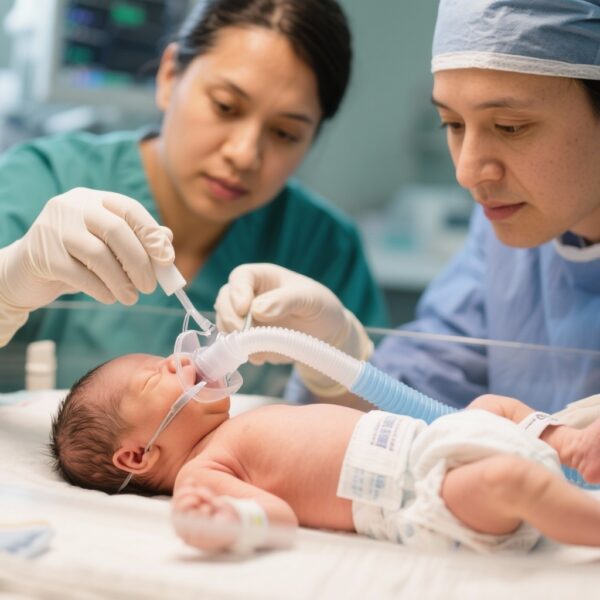Highlight
– The NEWTON-CABG CardioLink-5 was a randomized, double-blind, placebo-controlled trial evaluating evolocumab for preventing saphenous vein graft (SVG) failure after coronary artery bypass grafting (CABG).
– Despite achieving a substantial 48.4% placebo-adjusted reduction in LDL cholesterol (LDL-C), evolocumab did not reduce SVG disease rate at 24 months compared to placebo.
– The findings suggest that LDL-C lowering beyond guideline-recommended statin therapy does not significantly influence the pathophysiology of early SVG failure.
– Evolocumab was well tolerated with similar adverse event rates between treatment and placebo groups.
Study Background and Disease Burden
Coronary artery bypass grafting (CABG) remains a cornerstone intervention for patients with advanced coronary artery disease. Saphenous vein grafts (SVGs) are commonly used conduits; however, their long-term durability is limited by a high incidence of graft failure. Early SVG failure occurs in up to 25% of grafts within 1 to 2 years post-surgery, predominantly due to thrombosis, intimal hyperplasia, and atherosclerosis. This failure compromises the clinical benefits of CABG and contributes to recurrent ischemia and adverse cardiovascular events.
Low-density lipoprotein cholesterol (LDL-C) is a well-established causal factor in the development and progression of native atherosclerosis. Statins and other LDL-C lowering therapies have been associated with cardiovascular event reduction in many settings. However, the precise role of LDL-C in the pathogenesis of SVG failure and whether further LDL-C lowering beyond statins can improve SVG patency remain unclear.
Evolocumab, a potent proprotein convertase subtilisin/kexin type 9 (PCSK9) inhibitor, significantly reduces LDL-C levels. Its efficacy in reducing cardiovascular events in patients with established atherosclerosis is proven. The NEWTON-CABG CardioLink-5 trial was designed to test whether early initiation of evolocumab after CABG could reduce the rate of SVG disease, potentially improving clinical outcomes.
Study Design
NEWTON-CABG CardioLink-5 was an international, multicenter, randomized, double-blind, placebo-controlled trial conducted across 23 sites spanning Canada, the United States, Australia, and Hungary. The study enrolled adults aged 18 years or older who had undergone CABG surgery involving at least two saphenous vein grafts and were already receiving moderate- or high-intensity statin therapy.
Participants were randomly assigned within 21 days post-CABG in a 1:1 ratio to receive either subcutaneous evolocumab 140 mg or placebo every two weeks. Randomization was performed with variable block sizes and stratified to ensure balance. The modified intention-to-treat population included participants who had at least one follow-up imaging assessment at 24 months.
The trial’s primary endpoint was the 24-month vein graft disease rate (VGDR), defined as the proportion of SVGs showing ≥50% occlusion on either coronary computed tomography angiography or clinically indicated invasive angiography. Safety and tolerability were secondary endpoints assessed through monitoring adverse events.
Key Findings
Between June 2019 and November 2022, 782 participants were randomized to evolocumab (n=389) or placebo (n=393). Baseline characteristics among 554 participants who contributed to primary outcome data revealed a median age of 66 years, with a predominance of male participants (85%). Median baseline LDL-C levels were balanced between groups (evolocumab: 1.85 mmol/L; placebo: 1.86 mmol/L).
Evolocumab led to a significant reduction in LDL-C by 52.4% from baseline at 24 months, compared with a 4% reduction in the placebo group, representing a 48.4% placebo-adjusted reduction (p<0.001).
Despite marked LDL-C lowering, the 24-month VGDR was 21.7% in the evolocumab group versus 19.7% in the placebo group. This difference of 2.0% (95% CI -3.1 to 7.1; p=0.44) was not statistically significant, indicating evolocumab had no meaningful effect on SVG patency relative to placebo.
Regarding safety, both groups exhibited comparable adverse event profiles, with no unexpected safety signals related to evolocumab administration. Treatment discontinuations due to adverse events were rare and balanced.
Expert Commentary
The results from the NEWTON-CABG trial provide critical insights into the biology of SVG failure. Despite convincingly lowering LDL-C to levels well below current guideline targets, evolocumab did not confer benefit in preserving graft patency at 2 years. This observation challenges the assumption that further LDL-C reduction beyond statin therapy effectively mitigates early SVG disease.
Early SVG failure is complex and multifactorial, often involving thrombosis, vascular injury related to surgical manipulation, and intimal hyperplasia rather than classical atherosclerotic plaque formation. The findings suggest that the pathophysiological mechanisms driving early SVG failure may be resistant to lipid lowering alone and highlight the need to explore alternative preventive strategies focused on thrombosis modulation and vascular healing.
From a clinical standpoint, the data reinforce current practice emphasizing statins as the cornerstone of lipid management. Initiating PCSK9 inhibitors like evolocumab soon after CABG solely to reduce SVG failure is not supported by this evidence. Nevertheless, PCSK9 inhibitors remain essential in managing patients at very high cardiovascular risk for systemic atherosclerotic disease beyond graft patency concerns.
Limitations include the 24-month follow-up duration, which may not capture long-term effects on graft durability. Also, the trial enrolled patients already on statins, so the incremental benefit of starting evolocumab in statin-naïve individuals remains unexplored.
Conclusion
The NEWTON-CABG CardioLink-5 trial demonstrates that early intensive LDL-C lowering with evolocumab after coronary artery bypass surgery does not reduce saphenous vein graft disease at 24 months. These findings underscore the complex, non-atherosclerotic mechanisms contributing to early SVG failure and suggest that further LDL-C lowering beyond statins is not effective in this context.
Future research should focus on elucidating the biological processes underlying graft failure and exploring targeted therapies beyond lipid lowering. In clinical practice, adherence to moderate- to high-intensity statin therapy remains paramount, while PCSK9 inhibitors should be reserved for appropriate patients based on systemic cardiovascular risk profiles.
References
1. Verma S, Leiter LA, Teoh H, et al. Effect of evolocumab on saphenous vein graft patency after coronary artery bypass surgery (NEWTON-CABG CardioLink-5): an international, randomised, double-blind, placebo-controlled trial. Lancet. 2025 Sep 20;406(10509):1223-1234. doi:10.1016/S0140-6736(25)01633-2. Epub 2025 Sep 1. PMID: 40907505.
2. Hillis LD, Smith PK, Anderson JL, et al. 2021 ACC/AHA Guideline for Coronary Artery Bypass Graft Surgery: A Report of the American College of Cardiology/American Heart Association Task Force on Clinical Practice Guidelines. Circulation. 2021;144(5):e349-e440.
3. Alexander JH, Smith PK. Coronary-Artery Bypass Grafting. N Engl J Med. 2016;375(21):e26.


